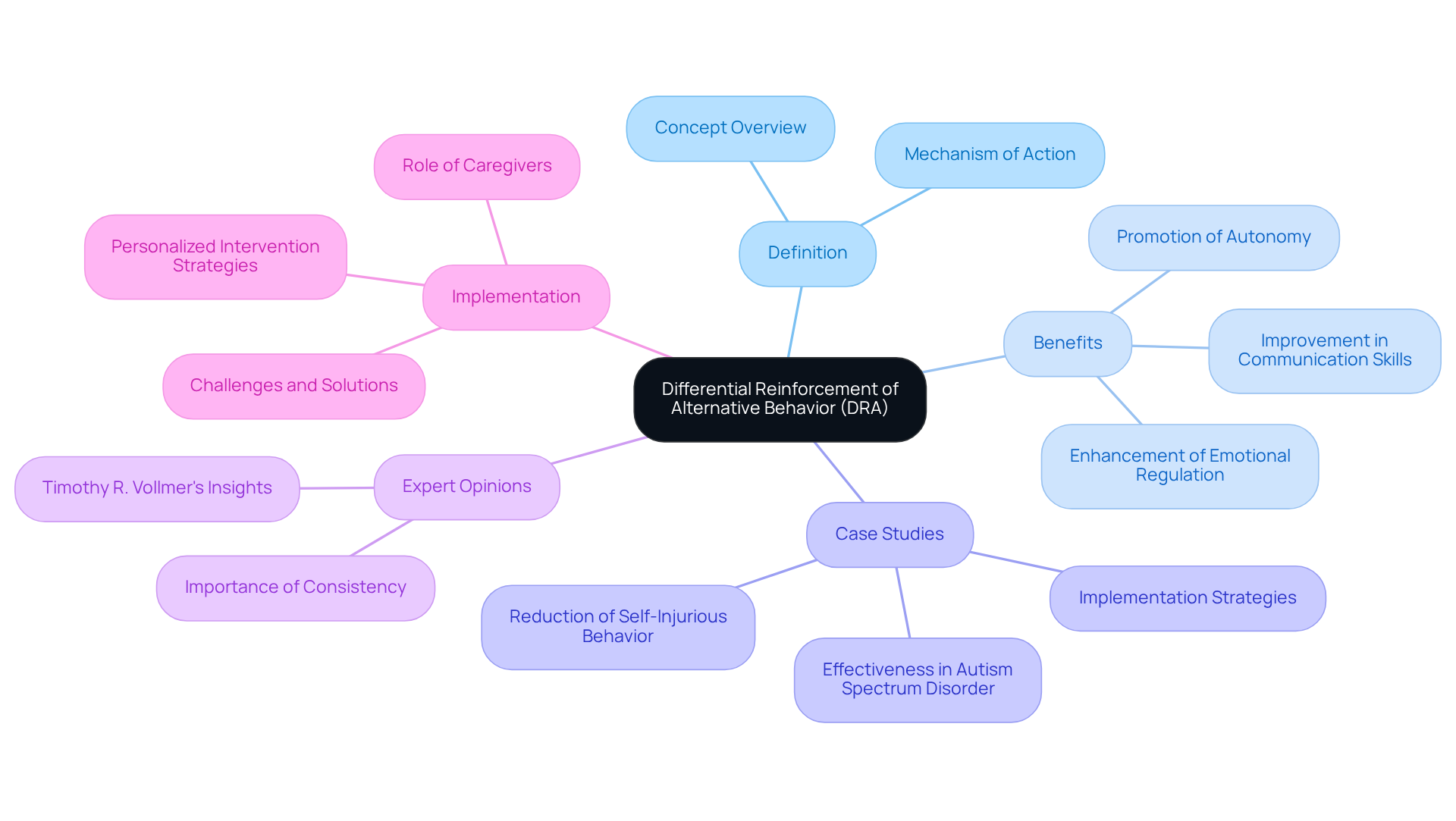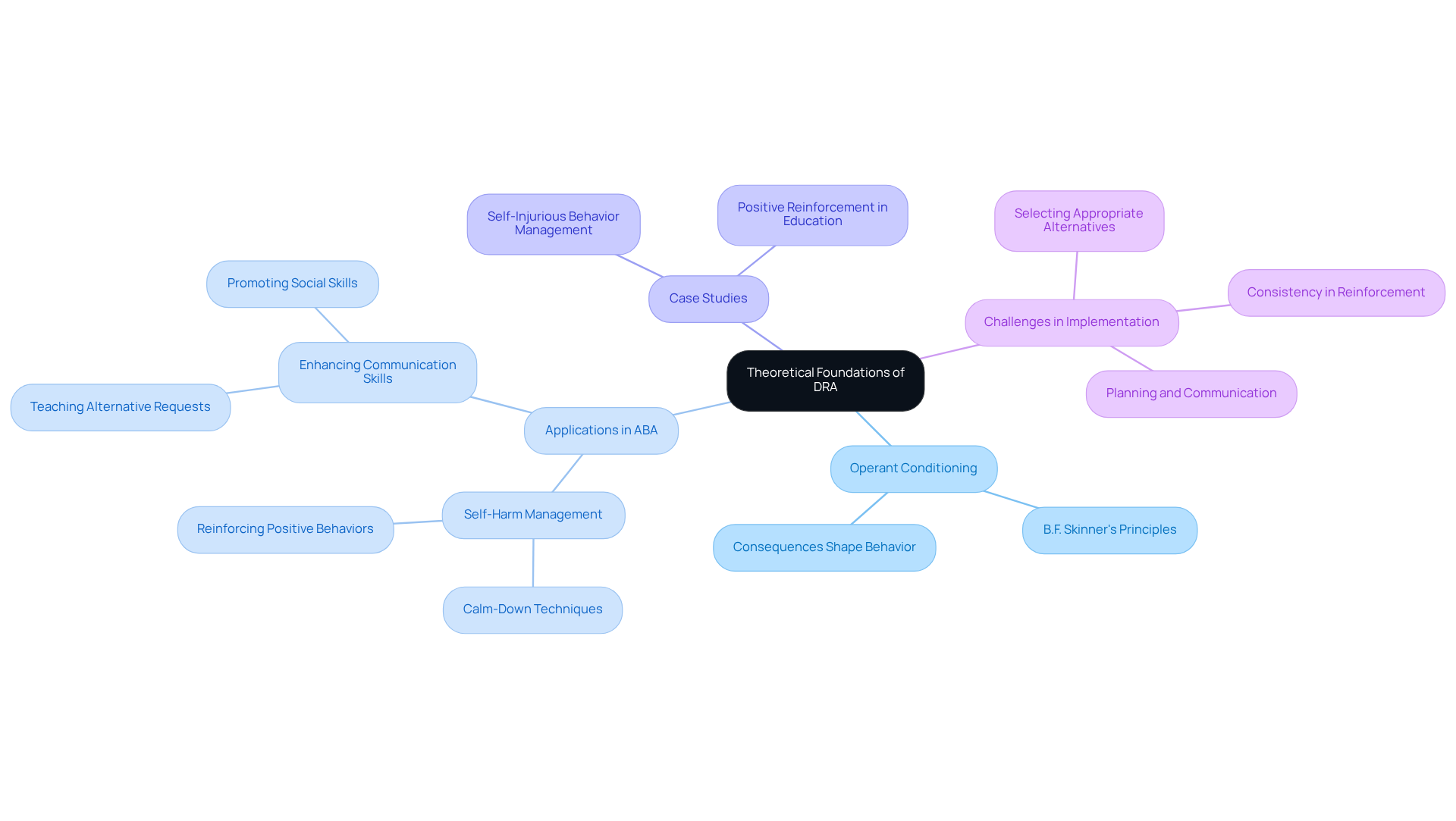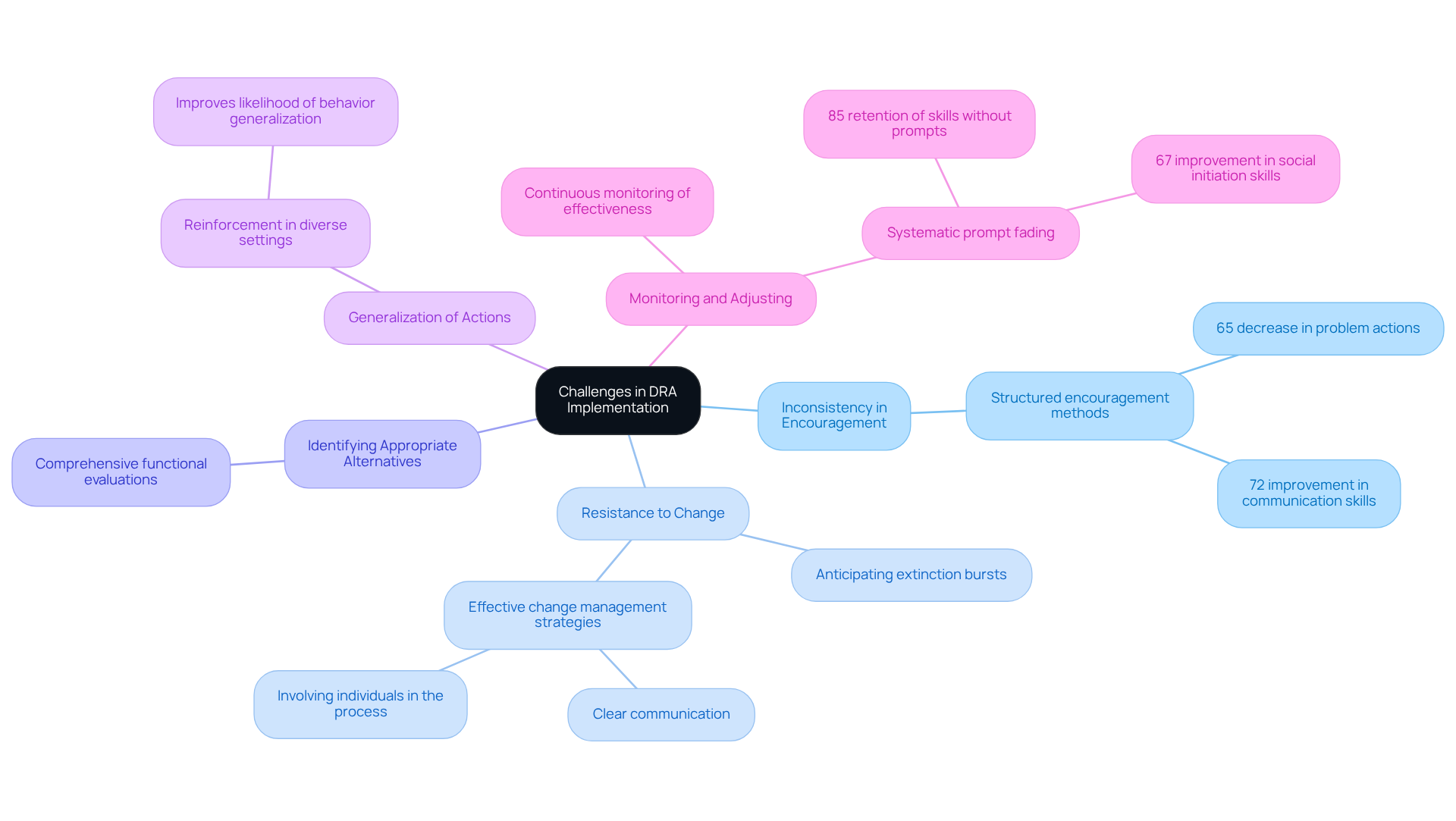September 5, 2025

This article delves into the concept of Differential Reinforcement of Alternative Behavior (DRA) within Applied Behavior Analysis (ABA), underscoring its efficacy as a behavioral intervention strategy. The discussion begins by highlighting the growing demand for effective behavioral strategies, capturing the reader's attention.
Following this, the systematic implementation steps of DRA are detailed, illustrating how practitioners can effectively apply this approach in real-world settings.
Challenges that practitioners may encounter are also addressed, providing a comprehensive view of the process.
Furthermore, evidence from various studies is presented, demonstrating DRA's positive impact on behavior modification, enhancement of communication skills, and emotional regulation in children.
This overview not only informs but also prompts reflection on the potential of DRA as a reliable intervention method.
Differential Reinforcement of Alternative Behavior (DRA) stands as a transformative approach within Applied Behavior Analysis (ABA), possessing the potential to reshape behaviors and enhance communication skills. By concentrating on reinforcing desirable actions while minimizing unwanted behaviors, practitioners can instigate meaningful changes in their clients' lives. Yet, the journey toward effectively implementing DRA is not without its challenges, necessitating careful navigation and strategic planning.
How can practitioners harness the power of DRA to foster positive behavioral outcomes while overcoming these obstacles?
Differential Reinforcement of Alternative Behavior (DRA) stands as a pivotal behavioral intervention strategy within Applied Behavior Analysis (ABA). It concentrates on strengthening a preferable alternative action while withholding support for an unwanted action. This technique is designed to increase the frequency of the substitute action, effectively replacing the problematic conduct. For instance, if a child frequently shouts to gain attention, a practitioner might reinforce the child for raising their hand instead, thereby encouraging a more appropriate method of seeking attention.
The benefits of DRA are substantial; studies indicate that it can lead to significant improvements in communication skills and emotional regulation among children. Research shows that DRA significantly enhances communication skills and promotes autonomy in children. In one case study, the implementation of DRA resulted in a notable reduction in self-harm and an enhancement in overall emotional regulation, demonstrating its effectiveness in fostering positive behavioral change. Furthermore, DRA is widely utilized by practitioners, with research indicating that it is a preferred method for addressing challenging behaviors across various settings, including classrooms and therapy sessions.
Expert opinions underscore the importance of DRA in ABA, highlighting its role in fostering healthier behavioral patterns and enhancing overall developmental outcomes. Timothy R. Vollmer emphasizes that is crucial for effective modification of actions. By tailoring DRA strategies to meet individual needs and involving informed caregivers, practitioners can create personalized intervention plans that significantly improve the quality of life for those they serve.

The theoretical foundations of Differential Reinforcement of Alternative actions (DRA) are firmly anchored in B.F. Skinner's principles of operant conditioning, which assert that actions are shaped by their consequences. DRA operates on the principle that strengthening an alternative action can effectively reduce the frequency of an unwanted behavior. Numerous studies support this method, demonstrating that rewards significantly enhance the likelihood of an action being repeated, while withholding rewards for the undesired conduct aids in its reduction.
Erin S. Petscher noted, "While not all studies met the Task Force criteria, many still served as an example of DRA in ABA, significantly contributing to the DRA in ABA body of literature." Understanding the reasons behind actions enables practitioners to select appropriate alternative options for support, thereby in ABA for behavior modification.
For instance, a case study on managing self-harm illustrated how DRA in ABA was applied to support calm-down techniques, leading to a notable reduction in such behaviors. This approach not only promotes positive behavioral changes but also empowers individuals to cultivate more adaptive skills. Furthermore, DRA can significantly enhance communication skills in children, underscoring its practical applications across various settings.
However, practitioners must remain cognizant of the challenges associated with implementing DRA in ABA, as highlighted in the case study on common challenges in DRA in ABA strategies, which underscores the necessity for meticulous planning and consistent reinforcement.

To implement Differential Reinforcement of Alternative behavior (DRA) effectively, practitioners must follow these essential steps:

Implementing Differential Reinforcement of Alternative behavior (DRA) can present several challenges, including:

Differential Reinforcement of Alternative Behavior (DRA) stands as a cornerstone strategy within Applied Behavior Analysis (ABA), dedicated to fostering positive behaviors while curtailing undesirable actions. By reinforcing alternative, more appropriate behaviors, practitioners can adeptly guide individuals toward healthier behavioral patterns and enhanced communication skills. The importance of DRA is underscored by its empirical support and its application across diverse settings, establishing it as an indispensable tool for practitioners in the field.
Throughout this article, we have delved into key insights regarding DRA, including:
Consistency in reinforcement, the careful selection of alternative actions, and the ongoing monitoring and adjustment of strategies have been emphasized as critical components. Moreover, case studies and expert opinions vividly illustrate the effectiveness of DRA in promoting positive behavioral changes and improving quality of life.
Ultimately, mastering DRA in ABA necessitates not only a comprehensive understanding of its principles and applications but also a steadfast commitment to adaptability and responsiveness in practice. As practitioners endeavor to implement these strategies effectively, they contribute to meaningful behavioral transformations that empower individuals to thrive. Embracing the DRA approach can yield significant advancements in communication and emotional regulation, reinforcing its value within the realm of behavior analysis.
What is Differential Reinforcement of Alternative Behavior (DRA)?
Differential Reinforcement of Alternative Behavior (DRA) is a behavioral intervention strategy within Applied Behavior Analysis (ABA) that focuses on strengthening a preferable alternative action while withholding support for an unwanted action. It aims to increase the frequency of a substitute action to replace problematic behavior.
How does DRA work in practice?
In practice, DRA involves reinforcing a desirable behavior instead of the undesirable one. For example, if a child shouts for attention, a practitioner may reinforce the child for raising their hand instead, promoting a more appropriate way to seek attention.
What are the benefits of using DRA?
The benefits of DRA include significant improvements in communication skills and emotional regulation among children. Research indicates that DRA can lead to a reduction in self-harm and enhance overall emotional regulation, demonstrating its effectiveness in promoting positive behavioral change.
Where is DRA commonly used?
DRA is widely utilized by practitioners in various settings, including classrooms and therapy sessions, to address challenging behaviors.
What do experts say about the importance of DRA?
Experts emphasize the importance of DRA in ABA for fostering healthier behavioral patterns and enhancing developmental outcomes. Consistency in reinforcement is highlighted as crucial for effective behavior modification.
How can DRA be tailored to individual needs?
DRA strategies can be tailored to meet individual needs by involving informed caregivers and creating personalized intervention plans, which can significantly improve the quality of life for those receiving the intervention.
Our expert recruitment strategies and AI-driven sourcing ensure that you receive top-notch candidates quickly, without compromising on quality. Whether you’re looking for BCBAs, Clinical Directors, or RBTs, we’ve got you covered.